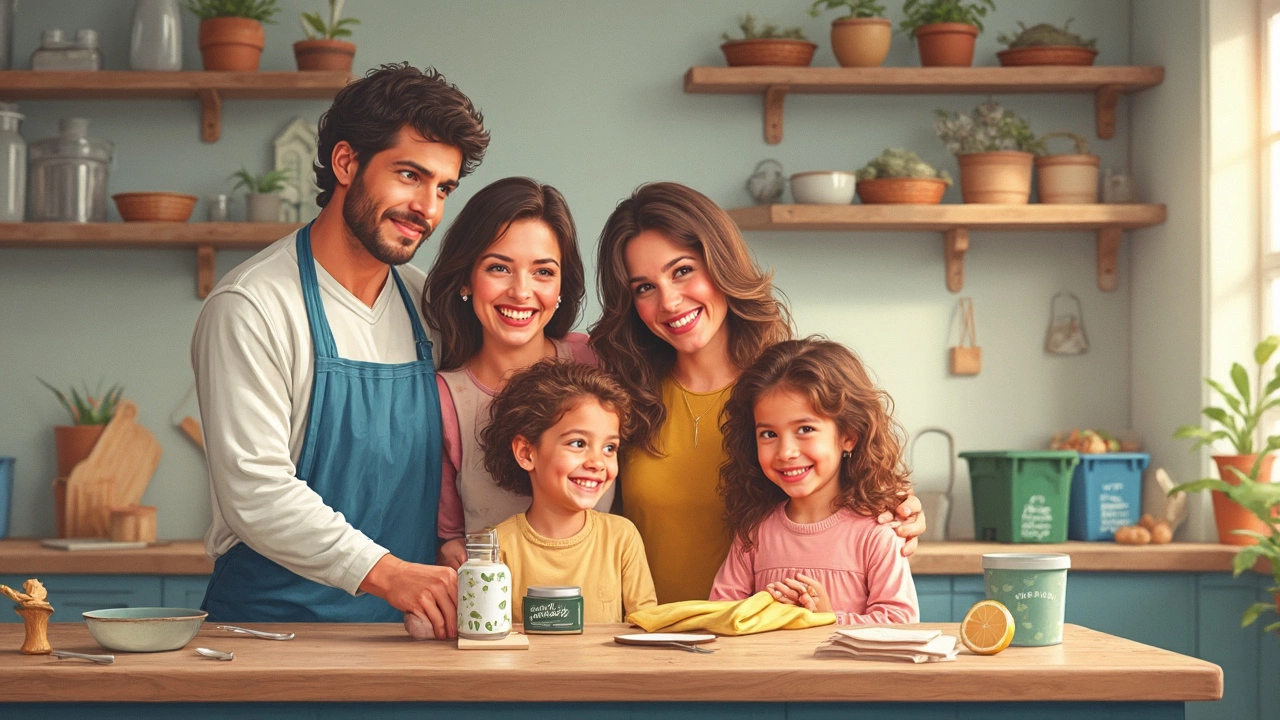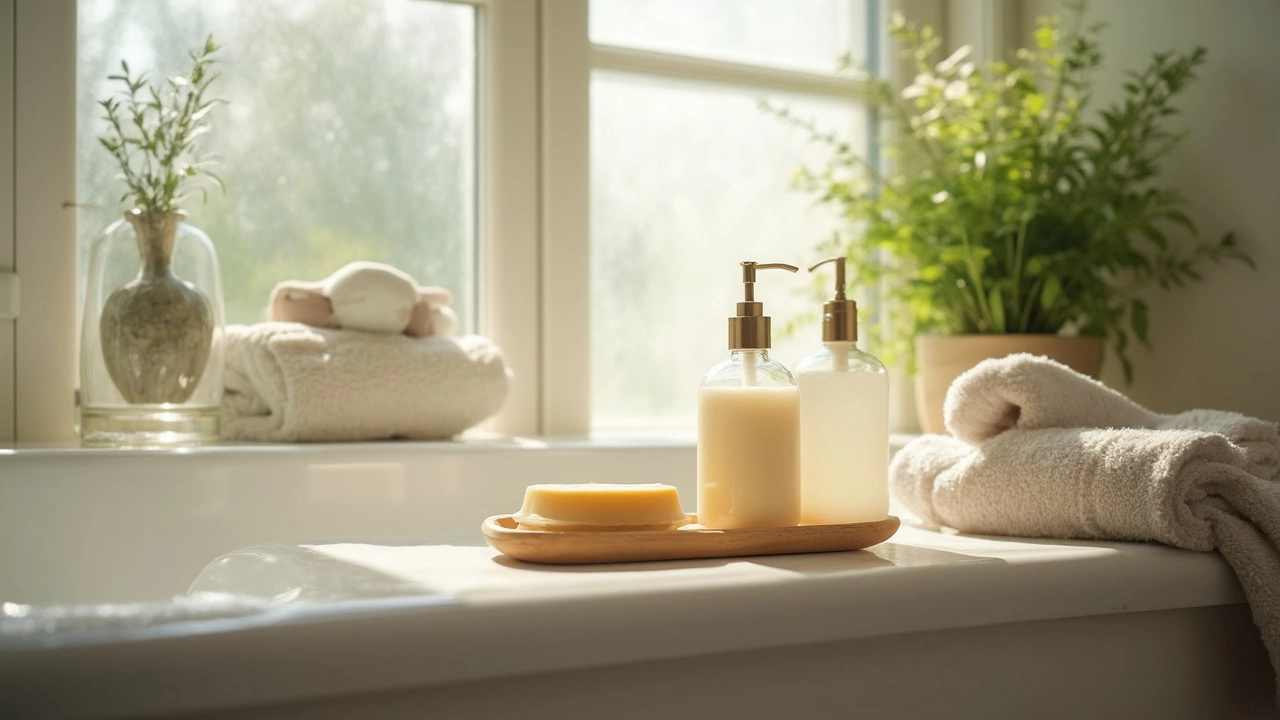Think about what actually touches your skin every single day. Most people reach for whatever's in the soap dish, no questions asked. But have you ever stopped and wondered if that “fresh” product is really as clean and safe as it claims? Or if all those antibacterial buzzwords are just marketing smoke?
Turns out, the most hygienic thing to wash with might look a lot different than the stuff lining supermarket shelves. For one, a lot of soaps and gels are loaded with harsh chemicals or plastic beads that don’t just strip germs—they wreck your skin barrier and get flushed straight into rivers, too. That’s not doing anybody any favors.
If you're thinking about making a swap, what you wash with can be seriously eco-friendly and still knock out germs. You don’t need anything fancy. Half the world’s doctors still stick to old-school soap and water for a reason: they get it done without needing a chemistry degree. But these days, there are cleaner, greener upgrades—some so simple it might surprise you. Ready to make the switch for your health and the planet? Let’s get real about what works—and what’s just hype.
- Why Regular Soaps Aren’t Always Best
- Eco-Friendly Swaps for Squeaky Clean
- The Science of Killing Germs: What Actually Works?
- Tips for a Greener, Cleaner Wash Routine
Why Regular Soaps Aren’t Always Best
We’re all used to grabbing the bar or pump of whatever’s called “soap” in the store. But here’s the thing—most mainstream soaps are actually a mix of detergents, synthetic scents, and sudsing agents. They’re not even technically soap by definition. They might bubble up nice, but some also bring along baggage for your skin and the planet.
The big issue? Many name-brand soaps and shower gels come loaded with ingredients like sodium lauryl sulfate (SLS), parabens, and triclosan. SLS is a heavy-duty detergent that strips the natural oils your skin actually needs, leaving folks itchy, dry, or even flaky. Parabens are preservatives that have raised eyebrows because they can mess with hormones in large doses. Triclosan, once the darling of “antibacterial” marketing, got banned by the FDA in the US for everyday hand soaps back in 2016—turns out it was helping bacteria get tougher instead of safer.
- Triclosan may increase antibiotic resistance among bacteria.
- Fragrances in regular soaps often come from undisclosed chemical mixes. Some people end up with rashes or headaches and don’t know why.
- A lot of cleaning “microbeads” are actually plastic pellets—bad news for any river, fish, or food chain they end up in.
The planet pays, too. The plastic packaging, chemical runoff, and fake scents build up in water systems and can harm aquatic life. According to a 2023 report from the Environmental Working Group, only 9% of standard bath soap bottles in the US get recycled—most go straight to landfill.
| Ingredient | Concern | Common Use |
|---|---|---|
| Sodium Lauryl Sulfate (SLS) | Strips natural oils, skin irritation | Foaming agent |
| Parabens | Hormone disruption risk | Preservative |
| Triclosan | Antibiotic resistance risk | Antibacterial additive |
| Microbeads | Plastic pollution | Exfoliant in washes |
If you want the most hygienic and eco-friendly cleaning routine, it's time to look past whatever is cheapest or makes the most bubbles. Sometimes “regular” isn’t safest—or even much good at cleaning.
Eco-Friendly Swaps for Squeaky Clean
If you want to skip the chemical mess and single-use plastics, swapping what you wash with is a great start. Some of the best eco-friendly cleaning swaps are actually old-school, super simple, and easy to find.
Bar soap comes out on top when you’re talking about the most hygienic and planet-friendly choice. Look for ones without plastic wrap and with natural ingredients. Castile soap, made mainly from olive oil, is a good pick—gentle on skin, no petrochemicals, and it breaks down safely in the environment.
- Bar Soaps: Skip the fancy packaging. Go for soap bars without palm oil or with a clear label about ethical sourcing. No plastic bottle means less trash—plus, bar soaps can last longer than pumped liquid soap.
- Refillable Liquid Soap: If you prefer liquid, search for refill stations at health food stores or test brands that ship in paper cartons or reusable containers. Just check the ingredients list — avoid sulfates and synthetic fragrances.
- Loofahs & Washcloths: Ditch plastic shower puffs. Grab a natural loofah, washcloth, or even a simple sea sponge. Chuck them in the laundry every week so germs don’t build up. They’ll break down in compost at the end of their life.
- DIY/Vinegar Mix: For surfaces or handwashing (when not on skin sensitive to acidity), a simple mix of vinegar and water can do the trick. Add a few drops of natural essential oil if you want a scent boost—lemongrass and tea tree both have extra bacteria-busting powers.
It’s smart to look for sustainable hygiene stuff that’s made local too. Made-in-your-town soap skips a global carbon footprint. Also, check how the company deals with its environmental impact—a good brand usually brags about its water use, packaging, or reforestation steps right on the label or website.
Want some numbers? A study from the Journal of Water and Health found that bar soaps are just as effective at removing germs as liquid soaps, but average users cut down on plastic waste by about 35% per year just making that one swap.
| Cleaner Type | Main Benefit | Waste Produced |
|---|---|---|
| Traditional Bar Soap | No plastic, lasts long | Minimal (paper/wax wrap) |
| Refillable Liquid Soap | Convenient, custom scents | Reusable/Reduced |
| Commercial Gel | Easy to use | Single-use plastic |
There’s really no need for single-use wipes or harsh antibacterial solutions for most natural cleaning at home. Save those for the rare times you need a medical-level clean—like cleaning up after the flu hits. For every day, these eco swaps are safer for you, your family, and the river behind your house.

The Science of Killing Germs: What Actually Works?
When it comes to being most hygienic, it’s all about the kill rate—how well something wipes out germs. Here’s the deal: you don’t need something that smells like a chemistry set on overdrive. Plain soap and water do the real heavy lifting. When you lather up, you break down the oils holding germs to your skin. Soap molecules are like tiny double agents; they wedge themselves into grease and germs, break them apart, and rinse them right down the drain. No high-tech ingredients needed.
If you really want to see the numbers, here’s what stacks up:
| Cleaning Method | Germ Removal Rate |
|---|---|
| Soap & Water | Over 99% of common bacteria & viruses |
| Alcohol-based Hand Sanitizer (at least 60% alcohol) | 99% of many bacteria and viruses, but doesn’t work on all types |
| Plain Water | Around 80% (mostly from the scrubbing motion) |
So, while “antibacterial” sounds powerful, most washing situations don’t even need it. Everyday germs aren’t that tough; friction and rinsing do the trick. Plus, overusing antibacterial stuff can mess up your skin and actually boost superbugs. And hand sanitizers? Great for when you can’t get to a sink, but they don’t work well on dirty or greasy hands, and they’re no match for some nastier bugs like Norovirus.
Here’s what to remember for natural cleaning that is still effective:
- Scrub for at least 20 seconds. The real magic is in how well you scrub—not just what’s in the bottle.
- Use regular soap. The green, unscented bars work as well as the stuff with long ingredient lists.
- Rinse with running water. Don’t just wipe or splash—running water helps send all those germs down the drain.
Bottom line: Stick with time-tested basics for eco-friendly cleaning, and you’ll hit the hygiene sweet spot every time.
Tips for a Greener, Cleaner Wash Routine
If you’re thinking about ditching chemical-heavy cleaners, you’re not alone. Millions are making easy eco swaps that actually get the job done—no guilt, no weird unpronounceable stuff. Ready for a routine that’s both eco-friendly and most hygienic? Here’s how to nail it.
- Switch to solid soap bars made from natural oils. Liquid soaps often have more packaging and chemical additives. Look for bars with short ingredient lists—think olive oil, coconut oil, and lye. They wash off clean, last longer, and have a way smaller plastic footprint.
- Ditch the plastic loofahs. Those things turn into microplastic nightmares. Instead, try natural sponges, unraveled cotton washcloths, or even a simple loofah plant (yep, the vegetable kind). They scrub well, break down naturally, and don’t leave plastic crumbs behind.
- Cut back on hot water. Hotter isn’t always cleaner—it just uses more energy and often dries your skin. Studies show washing in warm, not scorching, water is plenty effective at removing germs and dirt.
- Use just enough soap. You don’t need suds up to your neck for things to get clean. More foam doesn’t mean more hygienic—it’s just more to rinse off (and more down the drain).
- Try refill stations for liquid soap if you must stick with liquid. These let you reuse old bottles and cut out new plastic waste. They’re popping up everywhere, from big cities to small towns.
Here’s a cool stat: going bar soap over liquid can chop your household’s plastic waste from cleansers by nearly 80% each year, plus it saves money. Check out how some swaps stack up:
| Product | Avg. Annual Waste (per person) | Eco-Friendly Alternative |
|---|---|---|
| Liquid Soap (plastics) | 12 bottles | Bar Soap (cardboard or no packaging) |
| Plastic Loofah | 4-6 sponges | Luffa plant, cotton cloth |
And, not to state the obvious, but air-drying your body and hands instead of grabbing paper towels or new bath towels every time is a zero-waste win. The fewer disposables, the greener your routine.
Doing laundry? Stick to planet-friendly detergents and skip fabric softeners. The softer clothes promise is mostly marketing, while you get more chemical goop running down into water supplies. Look for enzyme-based, fragrance-free pods or powders instead.
By tweaking just a few habits, you get a most hygienic cleaning routine that’s also something you can feel good about every time you wash up. Simple swaps, real impact.
